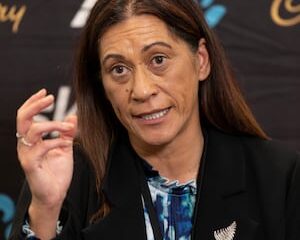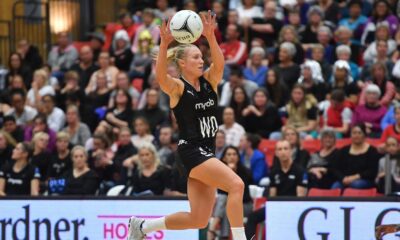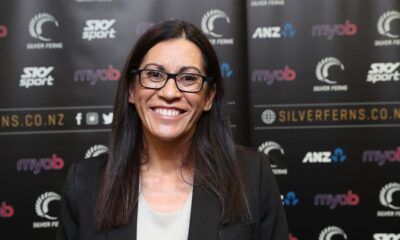Entertainment
New Hub Launched to Boost Local Children’s Content in New Zealand

Young children in New Zealand are increasingly disengaged from locally produced video content, according to new research from NZ On Air. The findings show that only half of children are interacting with local media, prompting the agency to create a dedicated hub on YouTube aimed at making it easier for families to find relevant content from Aotearoa.
The latest Where Are the Audiences survey conducted by NZ On Air highlights how children access media in New Zealand. It reveals that a significant 43% of parents are unsure where to locate local content. For parents of preschoolers, many could not name a single local show their child enjoys. In contrast, YouTube emerges as the most popular platform, with 69% of children using it daily. Other platforms, including Netflix and Disney+, have daily reach figures of 36% and 16%, respectively.
Cameron Harland, chief executive of NZ On Air, emphasized the challenge of reaching younger audiences in an increasingly fragmented media landscape. “While younger children may be influenced by their parents, older children have a lot of freedom to choose where and how they consume,” he stated. Harland’s comments underscore the necessity for local content to be available across various platforms to enhance discoverability.
Introducing KIDOGO: A New Resource for Young Viewers
To combat these engagement issues, NZ On Air has launched the KIDOGO hub on YouTube and YouTube Kids. This platform will showcase content funded by NZ On Air and Te Māngai Pāho, focusing on accessibility for young audiences. Amie Mills, head of funding at NZ On Air, noted that “with 69% of children using YouTube daily, many children and caregivers struggle to find local content amidst a sea of global offerings.”
KIDOGO aims to tackle the discoverability challenge by organizing local content and providing an avenue for producers to connect directly with audiences. According to Mills, the hub will feature shows that reflect Kiwi culture, including humor, values, and language. For instance, the preschool program Toi Time not only thrives on TVNZ+ but also expands its audience through YouTube with tailored music videos and shorts.
The survey revealed that while families value local content, they often find it difficult to locate amidst the vast array of digital options. The report concluded that enhancing visibility and improving labeling could help families access and enjoy the great content already being produced.
Cultural Connectivity and Content Preferences
The research also examined cultural engagement, finding that 78% of caregivers who engage with te reo Māori content consider it important for their children. Many non-Māori caregivers expressed a desire for their children to connect with Māori culture, often preferring that te reo Māori be integrated into familiar shows. Caregivers reported that Māori content fosters learning, connection, and pride among children.
While Netflix remains a dominant player in streaming services, the research indicates that TVNZ+, which includes programming from both TVNZ1 and TVNZ2, has a daily reach of 10% among Pacific children and mixed-age groups. This is notably lower than Netflix’s 36% reach but reflects a strong local presence.
Interestingly, the Australian animated series Bluey ranked as the favorite show among preschoolers, with 38% of caregivers identifying it as their child’s top pick. In comparison, only 6% of caregivers named local shows such as Kiri & Lou or Nee Naw as favorites, highlighting the challenges local content faces in gaining visibility.
Larry Parr, Kaihautū of Te Māngai Pāho, acknowledged the importance of ensuring that local and te reo Māori content remains visible and appealing to audiences. “While children who watch local and te reo Māori content value and enjoy it, the challenge is to make our content accessible in all the places children and caregivers expect to find it,” he stated.
The Where Are the Audiences survey, conducted by polling firm Verian in September 2023, involved interviews with families across the country and surveyed 1,024 parents and their children. The results underscore the pressing need for a more prominent presence of local content in digital media to better serve New Zealand’s youngest viewers.
-

 Sports2 months ago
Sports2 months agoNetball New Zealand Stands Down Dame Noeline Taurua for Series
-

 Entertainment2 months ago
Entertainment2 months agoTributes Pour In for Lachlan Rofe, Reality Star, Dead at 47
-

 Entertainment4 weeks ago
Entertainment4 weeks agoNew ‘Maverick’ Chaser Joins Beat the Chasers Season Finale
-

 Sports2 months ago
Sports2 months agoSilver Ferns Legend Laura Langman Criticizes Team’s Attitude
-

 Sports2 days ago
Sports2 days agoEli Katoa Rushed to Hospital After Sideline Incident During Match
-

 Politics1 month ago
Politics1 month agoNetball NZ Calls for Respect Amid Dame Taurua’s Standoff
-

 Entertainment2 months ago
Entertainment2 months agoKhloe Kardashian Embraces Innovative Stem Cell Therapy in Mexico
-

 World3 months ago
World3 months agoPolice Arrest Multiple Individuals During Funeral for Zain Taikato-Fox
-

 Sports3 months ago
Sports3 months agoGaël Monfils Set to Defend ASB Classic Title in January 2026
-

 Entertainment1 month ago
Entertainment1 month agoTyson Fury’s Daughter Venezuela Gets Engaged at Birthday Bash
-

 Sports1 month ago
Sports1 month agoHeather McMahan Steps Down as Ryder Cup Host After Controversy
-

 World2 weeks ago
World2 weeks agoSevere Winds Hit New Zealand, Over 100 Flights Canceled


















